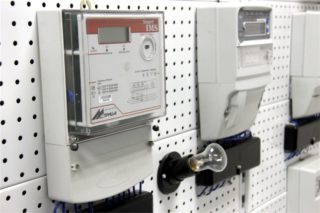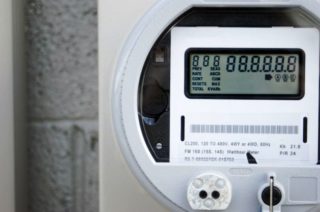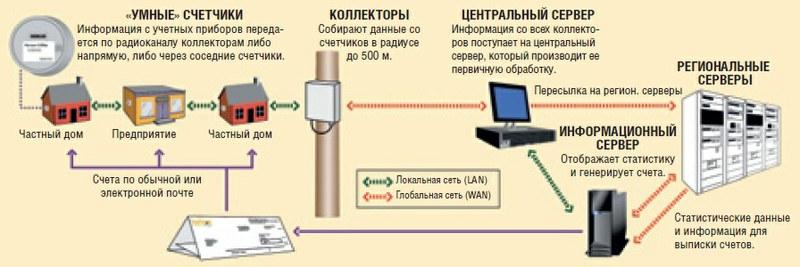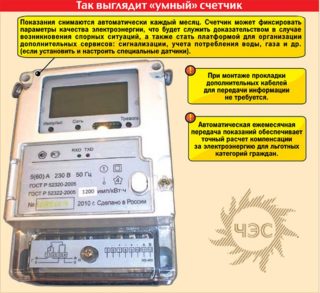Modern electric meters automate the process of taking readings and their remote transmission. This allows tenants and owners to pay for utilities remotely over the Internet, saving time. The legal framework is constantly being improved and undergoing changes.
What is a smart electricity meter

Smart electric meters got this name due to the fact that, without human intervention, they transmit readings to the information networks of companies for settlements. But the benefits don't end there: they cut utility bills. This can be explained by the fact that the accrual process is transparent as much as possible and minimizes the loss of resources.
Automatic submission of readings eliminates the possibility of submission of incorrect information or making mistakes - due to this, there are tangible savings. There will be no delays, the “smart” device will do everything on its own within the required time frame. There are not only smart electric meters, but also water meters, gas devices.
There are not so many differences between smart electricity meters and ordinary ones. The main difference lies in the installation of a controller that transmits information in an automated manner. Otherwise, the design features of electric meters are the same.
Principle of operation
An automated special device is considered a smart electric meter, the main task of which is to collect data on the amount of consumed resources. The optimal frequency of data transmission to companies' information nodes is once every 60 minutes.
Electricity, water and gas charges increase every year. As a result, the demand for smart devices is growing daily. They are installed in renovated buildings and new homes.
The transition to improved types of metering devices provides many advantages, including practicality and benefits.
The device consists of two main parts - a controller, which is responsible for data transmission, and a counter. Data transfer is carried out in several ways, it depends on the type of controller installed. The most modern and budgetary look is the wireless controller. With its help, data transfer can be carried out in one of the following ways:
- GPRS - connects via a standard mobile SIM card, it needs to be replenished regularly. The information is fed to the servers using public cellular communications.
- LPWAN - the technology has a lot in common with the previous method of data transmission, but it is less energy consuming. The data is supplied thanks to special towers, the main task of which is to connect the controllers with the server.
- Wi-Fi is the most modern technology that combines all the advantages of the previous two data transfer methods. Due to its low power consumption, the controller can be operated from rechargeable batteries.
In apartment buildings or industrial enterprises, it is better to use the first method of data transmission, the second is more appropriate for houses that are located far from cities.
Advantages and Disadvantages of Smart Electricity Meters
Advantages of smart devices:
- Comfortable use. The installation of advanced equipment makes life easier and more comfortable. The only thing that is required of the tenant is to pay for the services on time.
- There is an opportunity to switch to a new and more beneficial multi-tariff payment system for consumers.
It is worth noting the advantage of using such devices for public services, since leadership positions can reduce staff due to the lack of the need to collect readings.
Modern equipment has the following disadvantages:
- Stable Internet coverage is required, otherwise the switch will begin to malfunction, readings may not be transmitted in a timely manner.
- The high cost of smart metering devices.
- Like any other electrical device, the meter needs a stable and high-quality supply of electricity, otherwise the device will fail.
Despite the large number of advantages, due to the high cost, such meters pay off after several years, if not more.
Smart meter legislation
In December 2018, in the third reading of the State Duma, a law on "smart meters" was adopted, the main task of which is to ensure the rapid development of intelligent electricity metering systems throughout Russia. The bill is regularly amended.
The law states that as the old electricity metering devices fail, starting in July 2020, they will be replaced with new smart electricity meters. From 2021, smart meters will be forced into operation. Network companies and suppliers will have to install, configure and maintain them.
The consumer in the future will not be responsible for the purchase, installation and further maintenance. An exception is the placement of the device indoors or on the territory of private property.
Problems and peculiarities of work

Installation does not always imply an unobstructed approach to the device. In this case, special devices are additionally used that allow you to remotely monitor the readings and also pay for them.
The cost of a smart meter is influenced by two fundamental factors:
- the cost of the electric meter itself;
- the price of the controller, which is responsible for collecting and transmitting information to the servers.
Also, the cost of the improved equipment is affected by the accuracy class of the meter, the type of network voltage and the manufacturer. It will be possible to save the family budget only if a smart electric meter is installed on several apartments at the same time, but this can only be realized if all devices are located on a common panel in the entrance.
You can purchase an intelligent metering device yourself from official representatives; it is recommended to give preference to leading brands. The cost of installation and adjustment is about 6-7 thousand rubles, one setting will be cheaper - about 4 thousand. The price of the controller itself ranges from 3 to 10 thousand rubles.
An electric meter with a control panel is no different from traditional or smart metering devices. The only difference is the additional equipment with a remote control, which turns off the equipment to save energy consumed by it.










